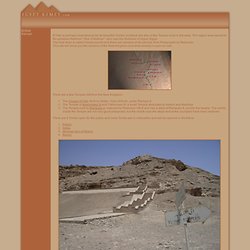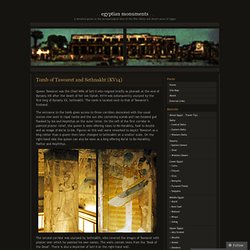

Isis. Temple of Isis in Philae, Egypt Isis (Ancient Greek: Ἶσις, original Egyptian pronunciation more likely "Aset" or "Iset") is a goddess in Ancient Egyptian religious beliefs, whose worship spread throughout the Greco-Roman world.

She was worshipped as the ideal mother and wife as well as the patroness of nature and magic. She was the friend of slaves, sinners, artisans and the downtrodden, but she also listened to the prayers of the wealthy, maidens, aristocrats and rulers.[1] Isis is often depicted as the mother of Horus, the hawk-headed god of war and protection (although in some traditions Horus's mother was Hathor). Isis is also known as protector of the dead and goddess of children. This myth became very important during the Greco-Roman period. Etymology[edit] The name Isis is the Greek version of her name, with a final -s added to the original Egyptian form because of the grammatical requirements of the Greek language (-s often being a marker of the nominative case in ancient Greek).
Osiris - Brother and Husband of Isis. Osiris (/oʊˈsaɪərɨs/; also Usiris), is an Egyptian god, usually identified as the god of the afterlife, the underworld and the dead.

He was classically depicted as a green-skinned man with a pharaoh's beard, partially mummy-wrapped at the legs, wearing a distinctive crown with two large ostrich feathers at either side, and holding a symbolic crook and flail. Osiris is first attested in the middle of the Fifth dynasty of Egypt, although it is likely that he was worshipped much earlier;[4] the term Khenti-Amentiu dates to at least the first dynasty, also as a pharaonic title. Most information available on the myths of Osiris is derived from allusions contained in the Pyramid Texts at the end of the Fifth Dynasty, later New Kingdom source documents such as the Shabaka Stone and the Contending of Horus and Seth, and much later, in narrative style from the writings of Greek authors including Plutarch[5] and Diodorus Siculus.[6] Etymology of the name[edit] Appearance[edit] Early mythology[edit]
Kemetic History of Afrika * Blue Lotus* Egypt Kemet. El Kab is perhaps most famous for its beautiful Tombs, but there are also a few Temple ruins in the area.

This region was sacred to the goddess Nekhbet, "She of Nekhen", who was the Goddess of Upper Egypt. The hole Area is called Hieraconpolis and there are remains of all periods, from Predynastic to Ptolemaic. This site will show you the remains of the New Kingdom and what already is open to visit. There are a few Temples left from the New Kingdom: The Chapel of Toth, Built by Setau, Visor of Kush, under Ramses II The Temple of Amenhotep III and Tuthmoses IV, a small Temple dedicated to Hathor and Nekhbet The Temple built by Rameses II, restored by Ptolemies VIII-X and has a stela of Rameses II, cut into the facade. There are 4 Tombs open for the public and more Tombs are in restoration and will be opened in the future. Tomb of Tawosret and Sethnakht (KV14) « Egyptian Monuments.
Queen Tawosret was the Chief Wife of Seti II who reigned briefly as pharaoh at the end of Dynasty XIX after the death of her son Siptah.

KV14 was subsequently usurped by the first king of Dynasty XX, Sethnakht. The tomb is located next to that of Tawosret’s husband. The entrance to the tomb gives access to three corridors decorated with the usual scenes now seen in royal tombs and the sun disc containing scarab and ram-headed god flanked by Isis and Nephthys on the outer lintel. On the left of the first corridor in painted plaster relief, the queen is seen offering vases to Re-Horakhty, food to Anubis and an image of Ma’at to Isis. Figures on this wall were reworked to depict Tawosret as a king rather than a queen then later changed to Sethnakht on a smaller scale. The second corridor was usurped by Sethnakht, who covered the images of Tawosret with plaster over which he painted his own names. Tawosret’s burial chamber is a rectangular room with four small annexes off the corners.